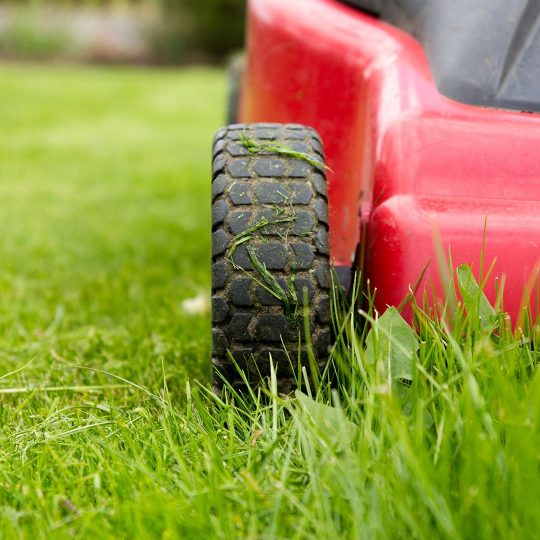Fall Lawn Mowing Tips
From Leaves to the Last Cut
Posted
September 14, 2023

Fall is that transitional time between harsh summer heat and winter freeze. Some grasses usually grow slower in these extreme temperatures. Fall is the time it perks up again—if only for a short time. This is an important period for gearing up your grass to survive the winter and thrive in spring. Fall lawn mowing is one essential task to help ensure grass health. Learn how to use this time to benefit both you and your lawn.
Fall Lawn Mowing
While the lawn mowing techniques are similar for spring and fall, there are some other factors to consider in this season’s mowing schedule. The key is to prepare your lawn for winter. Proper fall lawn maintenance can help prevent disease. What you do now can also affect what your lawn looks like next spring. Here are some of the fall factors to keep in mind.
- Leaves. If you have trees in your yard, you’ll be dealing with a lot more leaves on your lawn now than in the spring. Leaves are a blessing and a curse when it comes to lawn care. A blanket of wet leaves suffocates the grass and can lead to mold and disease. However, if you mow over them, you can break up the leaves in smaller pieces and use it as mulch. Depending on the amount of leaves on the lawn, you can leave shredded leaves in the grass or collect it in your mowing bag to use it as compost or mulch in the gardens.
- Wet Grass. Like the spring, fall is typically wetter than the summer. This is another reason your grass grows a little more than the previous season. You may have to cut your lawn more frequently, but you also want to keep proper grass height in mind. Cutting your grass too short can still send it into shock and kill it. But keeping your grass too long, especially when it’s wet, can lead to matting and disease. Just be sure to wait until the grass is dry before cutting it. Not only is the wet ground a slipping hazard, but the wet blades can tear easily, opening your lawn to disease. It can also clog your mower and require extra cleanup.
- Frost. The first frost may arrive before winter officially starts. This is the time when your grass will go dormant again and you won’t have to mow until the active growing season. Just as you don’t want to cut wet grass, you don’t want to cut frost-covered grass either. Even though your grass may still be growing once frost arrives, you can prepare for this time period by gradually lowering the height of the mower blades until the last cut before winter.
The Last Cut
Throughout the fall, you’ll start to notice your grass doesn’t grow as fast. As with any other season, you shouldn’t mow your lawn unless it needs it, so there’s no definite date for this last cut. It should only be done once your grass reaches a high enough height but has stopped growing. You don’t want to go into the winter season with tall grass. But you also don’t want to cut the grass too short since this will damage the root system that’s essential for winter survival.
Since you’ve been gradually lowering the mower blades up until this point, the last cut should be more of a trim. Be sure to check the optimal blade height for the type of grass you have. Contact Cardinal Lawns to help you determine what this height should be, when the final cut can take place, and any other tips to prepare your lawn for winter.
Special Offer for New Customers
Two Free Lawn Care Treatments
Hurry! Offer Expires July 31, 2024